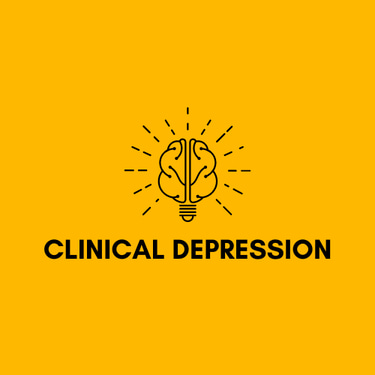For Questions: Text (833)233-0869
Telehealth Prescription for Anxiety: A Comprehensive Guide


In recent years, telehealth has emerged as a vital tool in the healthcare industry, providing patients with convenient access to medical care from the comfort of their homes. For individuals struggling with anxiety and depression, telehealth offers a practical and effective way to receive the treatment they need without the barriers of in-person visits. In this comprehensive guide, we will explore how telehealth prescription for anxiety works, the benefits it offers, and what patients can expect from the process.
Understanding Anxiety and Depression
Before diving into how telehealth can help with anxiety and depression, it's essential to understand these conditions.
Anxiety Disorders
Anxiety disorders are among the most common mental health conditions, affecting millions of people worldwide. They can manifest in various forms, including:
Generalized Anxiety Disorder (GAD): Characterized by excessive worry and tension, often without a clear cause.
Panic Disorder: Involves sudden and intense episodes of fear, known as panic attacks.
Social Anxiety Disorder: Fear of social situations and interactions.
Specific Phobias: Intense fear of specific objects or situations.
Anxiety disorders can significantly impact daily life, making it difficult to function at work, school, or in social situations.
Depression
Depression is another prevalent mental health condition that can cause persistent feelings of sadness, hopelessness, and a lack of interest in activities. Symptoms of depression can range from mild to severe and may include:
Persistent sadness or low mood
Loss of interest in activities once enjoyed
Fatigue and lack of energy
Changes in appetite and sleep patterns
Difficulty concentrating
Thoughts of self-harm or suicide
Both anxiety and depression can co-occur, with many individuals experiencing symptoms of both conditions simultaneously.
The Rise of Telehealth in Mental Health Care
Telehealth, also known as telemedicine, involves the use of digital communication tools like video calls, phone calls, and messaging to provide medical care remotely. This approach has become increasingly popular, especially in the field of mental health.
Why Telehealth Is Effective for Anxiety and Depression
Accessibility: Telehealth breaks down geographical barriers, making mental health care accessible to individuals in remote or underserved areas.
Convenience: Patients can schedule appointments at times that work best for them, without the need to travel or take time off work.
Privacy: For those who may feel uncomfortable visiting a mental health clinic in person, telehealth offers a more private way to seek help.
Continuity of Care: Telehealth allows for ongoing communication between patients and healthcare providers, ensuring that treatment plans can be adjusted as needed.
Affordability: Many telehealth services offer lower costs compared to traditional in-person visits, making mental health care more affordable.
How Telehealth Prescription for Anxiety Works
If you're considering telehealth for anxiety or depression, you might wonder how the process works, particularly when it comes to receiving a prescription.
Step 1: Initial Consultation
The first step in obtaining a telehealth prescription for anxiety is to schedule an initial consultation with a licensed healthcare provider. This consultation typically takes place via video call, but some platforms also offer phone consultations.
During this session, the healthcare provider will assess your symptoms, ask about your medical history, and discuss your treatment goals. It's essential to be open and honest during this conversation so that the provider can make an accurate diagnosis and recommend the best course of action.
Step 2: Diagnosis
Based on the information gathered during the initial consultation, the healthcare provider will diagnose your condition. If you have an anxiety disorder or depression, they may recommend a treatment plan that includes medication.
Step 3: Prescription
If medication is deemed necessary, the healthcare provider will prescribe it through the telehealth platform. Common medications prescribed for anxiety and depression include:
Selective Serotonin Reuptake Inhibitors (SSRIs): Such as sertraline (Zoloft) and fluoxetine (Prozac).
Serotonin-Norepinephrine Reuptake Inhibitors (SNRIs): Such as venlafaxine (Effexor) and duloxetine (Cymbalta).
Benzodiazepines: Such as lorazepam (Ativan) and alprazolam (Xanax) for short-term relief of acute anxiety.
Buspirone: A medication specifically for anxiety.
Beta-Blockers: Sometimes prescribed for performance anxiety.
The prescription will be sent electronically to a pharmacy of your choice, where you can pick it up or have it delivered to your home.
Step 4: Follow-Up Care
One of the critical aspects of telehealth is follow-up care. After receiving your prescription, you'll likely have follow-up appointments to monitor your progress and make any necessary adjustments to your treatment plan. These appointments can also be conducted via video call or phone.
Benefits of Telehealth Prescription for Anxiety
Telehealth prescriptions for anxiety offer numerous benefits, making this approach increasingly popular among patients and healthcare providers alike.
1. Convenience and Flexibility
One of the most significant advantages of telehealth is the convenience it offers. You can schedule appointments that fit your schedule, whether early in the morning, late at night, or during a lunch break. This flexibility is particularly beneficial for those with busy lives or those who struggle with mobility.
2. Reduced Stigma
Unfortunately, mental health stigma still exists, and many individuals hesitate to seek help due to fear of judgment. Telehealth provides a more private way to access care, allowing patients to receive treatment without the worry of being seen at a mental health clinic.
3. Timely Access to Care
Telehealth reduces wait times for appointments, ensuring that you can receive care when you need it. This is especially important for those dealing with acute anxiety or depression symptoms that require immediate attention.
4. Cost-Effectiveness
Telehealth services often cost less than traditional in-person visits. Additionally, the elimination of travel expenses and time off work can make telehealth a more affordable option for many patients.
5. Access to Specialists
For individuals living in rural or underserved areas, accessing mental health specialists can be challenging. Telehealth bridges this gap by connecting patients with specialists from across the country, ensuring they receive the care they need.
What to Look for in a Telehealth Provider
When seeking telehealth services for anxiety or depression, it's essential to choose a reputable provider. Here are some factors to consider:
1. Licensing and Accreditation
Ensure that the telehealth platform is licensed and accredited to provide medical care in your state. The healthcare providers on the platform should also be licensed professionals with experience in treating anxiety and depression.
2. User-Friendly Platform
The telehealth platform should be easy to use, with clear instructions for scheduling appointments, accessing video calls, and communicating with healthcare providers.
3. Comprehensive Services
Look for a platform that offers comprehensive services, including initial consultations, follow-up care, and prescription management. Some platforms also provide additional resources, such as therapy and mental health education.
4. Privacy and Security
Your privacy is paramount, so choose a telehealth provider that uses secure, encrypted communication tools to protect your personal information.
5. Insurance Coverage
Check whether the telehealth provider accepts your insurance. Many platforms work with various insurance companies, making it easier to receive care at a lower cost.
Potential Challenges and How to Overcome Them
While telehealth offers many advantages, there are also potential challenges to consider.
1. Technical Difficulties
Technical issues, such as poor internet connection or unfamiliarity with video conferencing tools, can disrupt telehealth appointments. To mitigate this, ensure that you have a stable internet connection and test the telehealth platform before your appointment.
2. Limited Physical Examination
Unlike in-person visits, telehealth may limit the healthcare provider's ability to conduct a physical examination. However, for mental health care, this limitation is often less significant, as the focus is on discussion and observation rather than physical assessments.
3. Lack of Immediate Access to Medication
While telehealth prescriptions are convenient, there may be delays in receiving medication, especially if you rely on delivery services. To avoid interruptions in treatment, plan ahead and ensure that you have enough medication on hand before your next refill.
The Future of Telehealth in Mental Health Care
The future of telehealth in mental health care looks promising, with continued advancements in technology and increased acceptance of remote care. As more patients and healthcare providers embrace telehealth, it's likely that this approach will become an integral part of the mental health care system.
1. Increased Accessibility
Telehealth will continue to improve access to mental health care, particularly for underserved populations. As internet access expands and telehealth platforms become more user-friendly, more individuals will be able to receive the care they need.
2. Integration with Other Services
Telehealth platforms may increasingly integrate with other mental health services, such as therapy, support groups, and wellness programs. This holistic approach can provide patients with a more comprehensive treatment plan.
3. Enhanced Patient Engagement
As telehealth becomes more interactive and personalized, patient engagement is likely to increase. Features such as real-time messaging, virtual support groups, and mental health apps can help patients stay connected and motivated in their treatment journey.
Conclusion
Telehealth prescription for anxiety offers a convenient, effective, and affordable way for individuals to receive the mental health care they need. With its numerous benefits, including accessibility, privacy, and cost-effectiveness, telehealth is transforming how anxiety and depression are treated.
If you're struggling with anxiety or depression, consider exploring telehealth options to find the care that's right for you. With the right telehealth provider, you can take the first step toward managing your mental health and improving your quality of life.
©2025
Clinical Depression
For Questions: Text
(833) 233-0869
